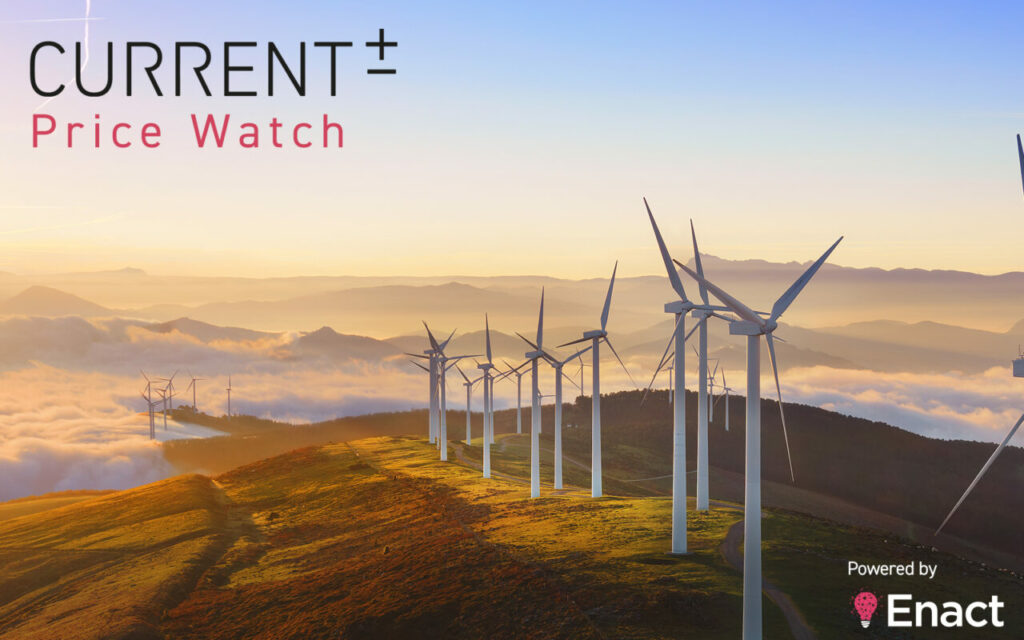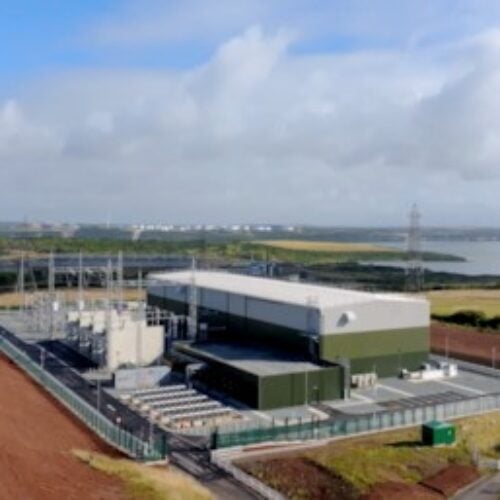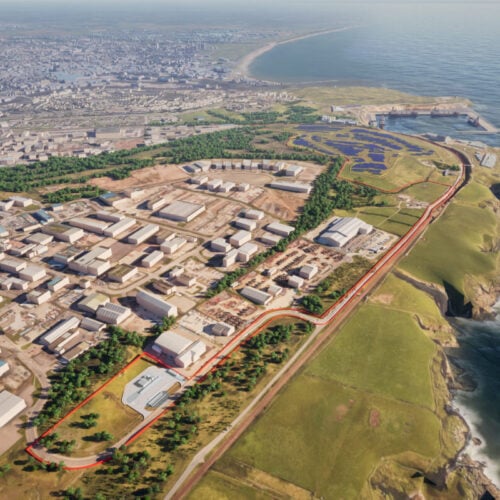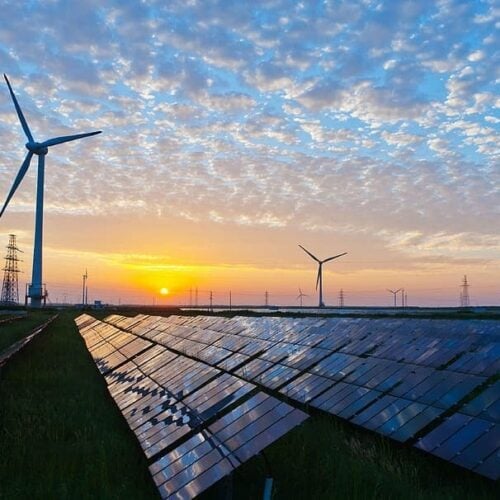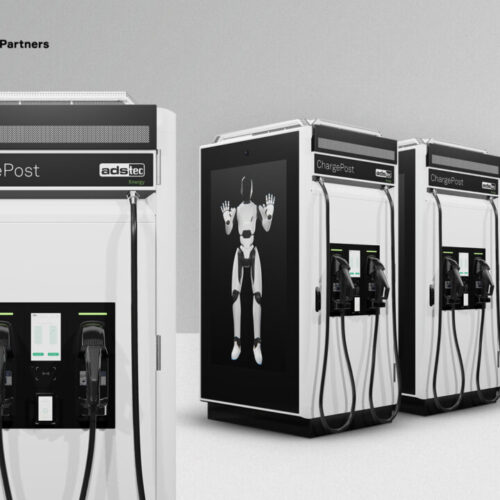In our weekly issue of Current± Price Watch – powered by Enact – we take a look at how high wind generation saw reduced energy prices last week, what is believed to be the last Demand Flexibility Service (DFS) trial and the IPCC’s latest climate report.
Day Ahead: Increased wind generation sees energy prices fall
Day ahead market prices had been impacted by increased wind generation in the UK across the week. The result saw a peak of £99.8/MWh on 27 March and a low of £12/MWh on 25 March.
On the 22, 23 and 24 March, wind generation hit 56.3%, 51.1% and 46.1%, respectively, which coincided with a reduced amount of gas utilisation across Britain, National Grid ESO’s data highlighted.
Yesterday #wind generated 56.3% of GB electricity, more than gas 14.1%, nuclear 12.6%, imports 9.5%, solar 4.1%, hydro 1.9%, biomass 1.5%, coal 0.0%, coal 0.0% *excl. non-renewable distributed generation pic.twitter.com/ncduYVEcNt
— National Grid ESO (@NationalGridESO) March 23, 2023
Wind is often regarded as one of the cheapest methods in generating renewable energy which, in the current climate, can have a major impact on the price of energy, as showcased within the day ahead market prices.
Recent analysis via RenewableUK’s EnergyPulse found that a total of just over 3.5GW of new wind capacity had been installed in 2022 with the technology becoming one of the most influential sectors for renewable generation.
“The latest figures show we made terrific progress in installing a record amount of new offshore wind capacity last year,” said RenewableUK’s chief executive Dan McGrail.
“However, we still need to ensure that the glacial pace of the consenting process is stepped up significantly to stay on track for the quadrupling of offshore capacity that the government wants to see by 2030 as a key step in strengthening the UK’s energy security.”
Intraday: IPCC report highlights the urgency of decarbonising the energy sector
Following a high of £146.28/MWh on 23 March, APX Mid intraday prices decreased towards the middle of last week, dropping to £-27.27/MWh on 25 March before remaining relatively stable throughout the weekend.
Last week the Intergovernmental Panel on Climate Change (IPCC) published its Synthesis Report for the Sixth Assessment Report, highlighting the urgency of a radical decrease in fossil fuel consumption in order to limit global warming to 1.5°C.
The report defines the 1.5°C target as the maximum increase in the planet’s temperature allowed to still be able to sustain a “liveable sustainable future.”
To stay within this goal, IPCC data found that emissions must be cut by almost 50% by 2030, a decrease which ought to have already picked up pace.
“Rapid and deep reductions in greenhouse gas (GHG) emissions require major energy system transitions,” said the report in high confidence.
Net zero CO2 energy systems could allow for a “substantial reduction in overall fossil fuel use,” but, the report continued in high confidence, “public and private finance flows for fossil fuels are still greater than those for climate adaption and mitigation.”
Responding to the IPCC report, Chiara Martinelli, director at Climate Action Network Europe said: “There is a reason why everyone talks about 1.5°. It’s not a craving, not a buzzword, not a wish list by environmentalists… it’s a scientific survival target.
“As dramatic as it is, the equation is quite straightforward: we know the problems and the solutions, what remains is the political will. We need the EU to be a climate leader and contribute to get us out of the many crises we are facing, making a historical push and once and for all publicly commit to what everyone knows needs to happen to avoid even more dreadful consequences: ditching fossil fuels and protecting the people and the planet.”
Imbalance: Final DFS test conducted
The imbalance market price hit a high of £235/MWh at the start of the week on 20 March but quickly reached a low of £-69MWh on the 21 March – both significantly lower than the week previous.
National Grid ESO utilised what will likely be the last test event within its DFS trial on 23 March calling for 300MW per half an hour for 18:30-19:30. This became the 19th test event since November.
While the trial period has another week left to run, the test represented the second compulsory test of the month. Additional tests could technically be used to onboard providers of DFS – with two onboarding tests for each after which companies are able to participate in the twice-monthly events.
🚨 (Maybe the last…) #SavingSessions alert (opt-in,📧's on route)
— 🐙⚡️ Saving Sessions Alerts (@SavingSessions) March 22, 2023
📅 23/3 18:30-19:30
🤑 EARN 33% MORE 🤑 🐙2400 (worth £3.00) per kWh saved vs normal
🎁 HUGE Super Saver Bonus:
👉 1 opt-in wins 🐙800k (£1000)
👉 STREAK:
+🐙100
+8 entries to win 🐙800k
DFS has generally been viewed as a success, highlighting the value of domestic demand flexibility in Britain. Octopus Energy recently called for the end of back-up coal generation given the potential of DFS to scale to meet the total requirement. This could be a huge testament both to the success of the DFS scheme and the wider UK decarbonisation prospects.
But one remaining challenge highlighted by the ESO’s presentation is the cost of the service in its current form, with the operator spending around £5.6 million on the tests, and £3 million on the live events.
Given the trial was likely to be the final test, British Gas announced it would triple payments to all of its participants.
“We will be tripling the payments made to customers for this event to provide a greater incentive to shift demand. For instance, if you save 1kWh in energy and National Grid pays you £3 then we will triple this to £9 and it will all go as a credit on your energy bill. We will also boost customers who make small savings to make sure they earn at least £1 from each event,” said a British Gas spokesperson at the time.
“The electricity grid is facing increased pressure and smart technology will play a key role in managing peak demand. During this trial we are testing how we can use this scheme to reduce consumption whilst having the added benefit of helping customers save on their energy bills. We’ve already been doubling payments this winter and are using this final event to test the impact of boosting the incentive even further.”
To find out more about LCP Delta’s Enact platform, click here or follow them on Twitter or LinkedIn for the latest market updates.
